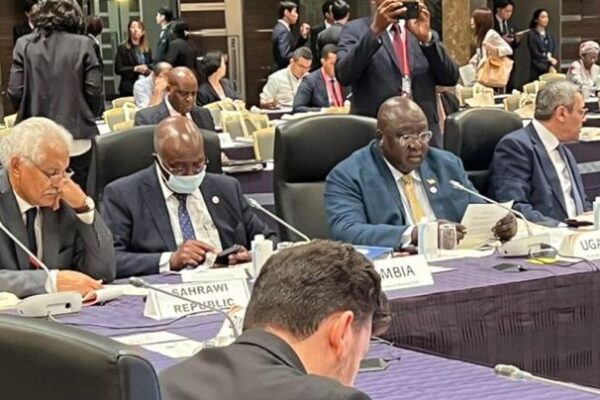Saharawi culture and society
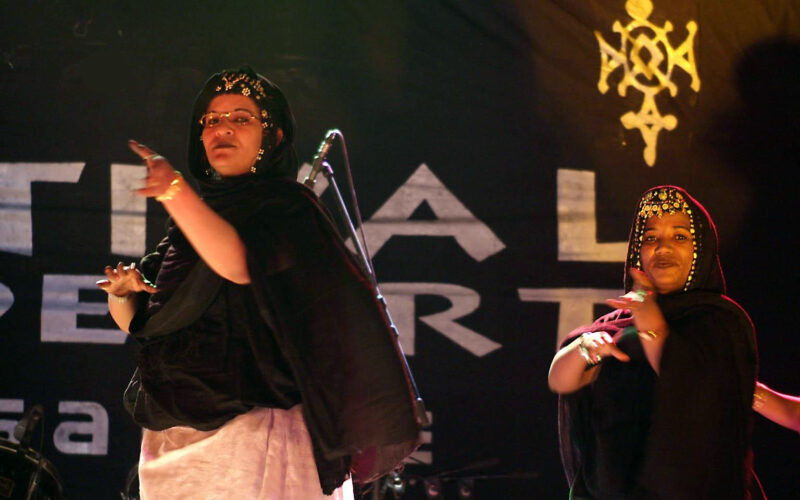
The vibrant tapestry of Saharawi culture and society unfolds like a captivating saga, woven with threads of tradition, resilience, and identity. Descendants of a nomadic and tribal heritage, the Saharawis have carved a distinctive cultural landscape, influenced by a mosaic of Berber, African, Arab, and Muslim traditions. Dubbed as the “Sons of the Clouds” by Spanish colonizers, they traversed vast expanses in pursuit of rain-swept horizons and verdant pastures to sustain their nomadic existence.
Spanning across the expanse known as Trab el-Bidhan, their realm stretched from the sun-kissed reaches of Wad Noun in southern Morocco to the fertile banks of the Senegal River in the south, embracing the vast swathes of Western Sahara and Mauritania. From the rugged terrain of the Hamada in Algeria and Mali to the azure embrace of the Atlantic coast in the west, the Saharawis roamed with an inherent sense of freedom, bound only by the rhythm of the land they traversed.
Embedded within the Saharawi psyche is an indelible connection to the rugged beauty of Western Sahara, echoed in the cadence of their oral traditions. Passed down through generations in the mellifluous tones of Hassaniya, their spoken language, these narratives form a tapestry of cultural heritage, woven with threads of wisdom, folklore, and ancestral lore.
Sahrawi Women
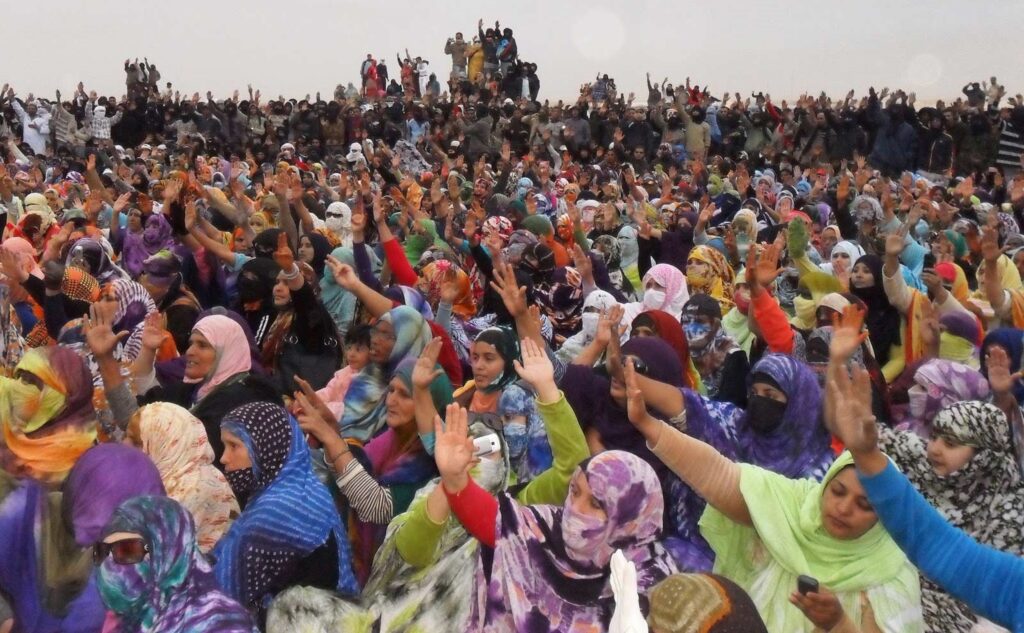
At the heart of Saharawi society, women have long stood as pillars of strength, wielding influence and autonomy within their nomadic communities. In the ebb and flow of desert life, they held pivotal roles as educators, custodians of familial bonds, and guardians of tradition. In the absence of men, who often tended to their herds, women bore the mantle of hospitality, extending warmth and generosity to weary travelers—a cornerstone of Sahrawi culture.
Though their autonomy faced encroachment during the era of Spanish colonization, it was rekindled amidst the flames of the Saharawi revolution. In the crucible of exile and conflict, women emerged as the bedrock of resilience, steering the course of their people with unwavering resolve. Amidst the harsh sands of southwestern Algeria, they forged the foundations of the Saharawi refugee camps, assuming leadership roles in governance, education, and healthcare while their male counterparts waged war against the Moroccan incursion.
Even under the shadow of Moroccan occupation, Saharawi women have remained steadfast champions of self-determination, their voices resounding through the corridors of peaceful activism. Among them shined many Sahrawi women leaders both in the occupied territories and the camps.
Language and oral traditions
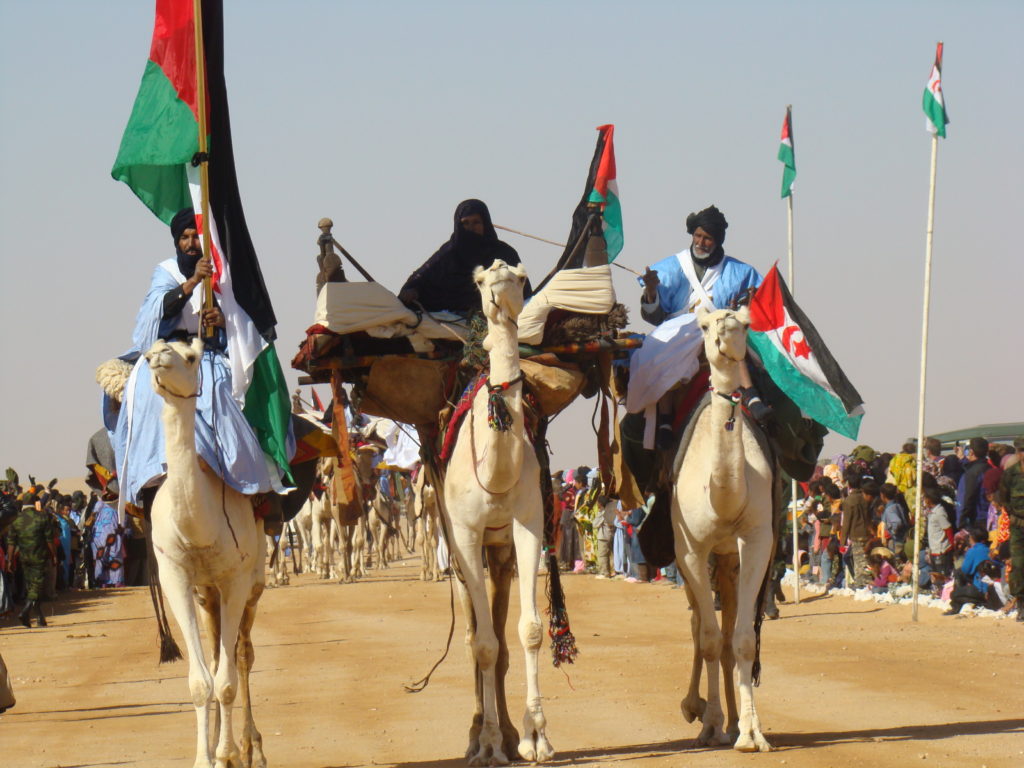
Language, the lifeblood of Saharawi culture, finds expression in the melodic cadences of Hassaniya—a dialect issued from Arabic, Berber, African and Spanish influences. Rooted in orality, Saharawi society thrives on the exchange of stories, fables, poems, and songs, often interwoven with the rituals of the tea ceremony. Through these narratives, the Saharawis preserve the mosaic of their existence, immortalizing the rhythms of nomadic life and the echoes of ancestral wisdom for generations yet to come.
In the face of modernity and globalization, the oral heritage of the Saharawi people remains a steadfast anchor, grounding them in a sense of belonging amidst the shifting sands of time. As they gather beneath the desert skies to share their tales and songs, they reaffirm their connection to the land and to each other, forging bonds that transcend the boundaries of language and culture. And in the melodic strains of Hassaniya, they find solace and strength, knowing that their voices will echo through the annals of history, carrying forth the legacy of a people who have endured, and thrived, in the face of adversity.
Tea Ceremony
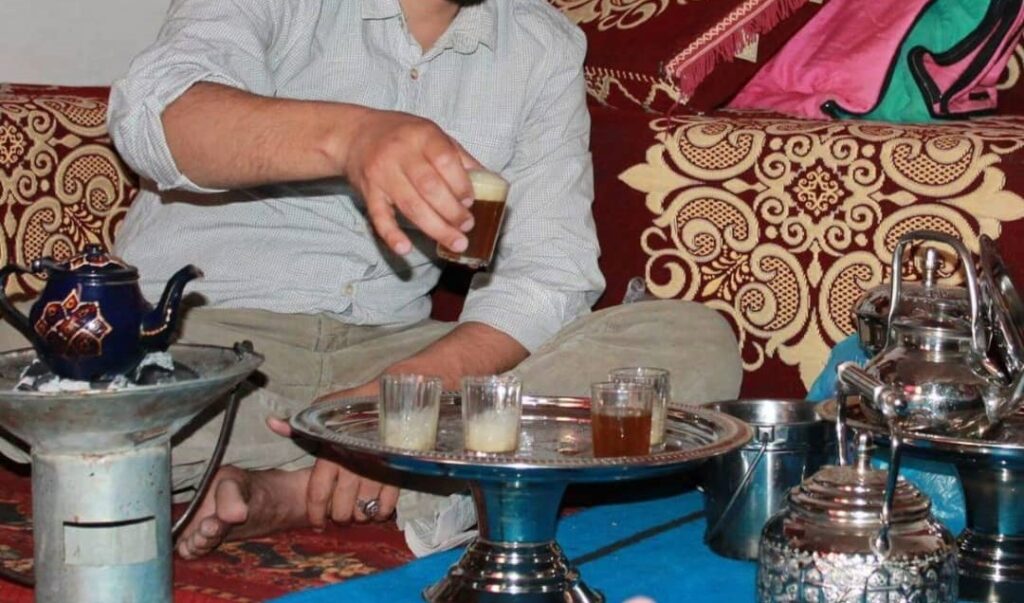
At the heart of Sahrawi hospitality and social interaction lies the revered tradition of the tea ceremony. This ritual, steeped in centuries of tradition and cultural significance, serves as a cornerstone of Sahrawi identity and community cohesion. Taking place within the intimate confines of woven tents or beneath the expansive desert skies, the tea ceremony is more than a simple act of serving and imbibing tea—it is a symbolic exchange of warmth, friendship, and respect.
The preparation of tea is an intricate affair, with each step imbued with meaning and tradition. A blend of green tea leaves, fresh mint, and generous spoonful of sugar are meticulously boiled together in a traditional kettle known as a “Barrad.” As the fragrant brew simmers over an open flame, it symbolizes the bonds of kinship and camaraderie that unite the Sahrawi people. Once brewed to perfection, the tea is poured in a graceful arc from pot to glass, a gesture of generosity and hospitality extended to all who gather. With each sip, participants are enveloped in a sense of belonging, as they share stories, laughter, and companionship in the timeless ritual of the Sahrawi tea ceremony.




